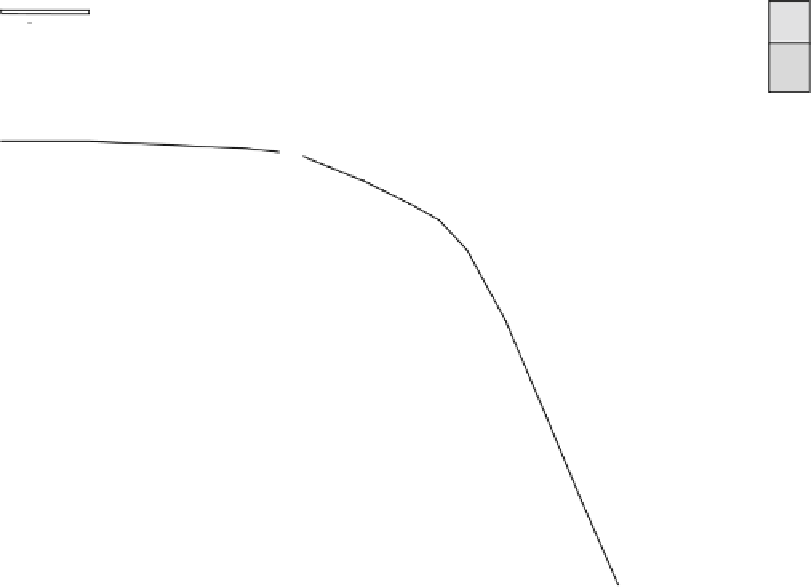Information Technology Reference
In-Depth Information
Coast
Range
Willamette
Western
Cascades
High
Cascades
coast
Valley
100
200
400
distance, km
o
250 C
o
o
250 C
Harzburgite,
substituted by lherzolite
at large depth
o
900° C (dry lherzolite solidus)
o
500 C
o
500 C
o
900 C
50
Asthenosphere - lherzolite with ~ 2% melt
o
o
750 C
750 C
Neogene sediments of continental basin
Turbidite / hemipelagic oceanic sediments
o
H O
900 C
2
Post-Eocene accreted oceanic sediments
Pre-Eocene accreted oceanic sediments
Oceanic basalts / gabbro
o
Mafic eclogites
750¡C
o
1250 C
Pre-Eocene continental crust, consisting mostly
of accreted terrains, subjected to Tertiary
amphibolite / granulite metamorphism
100
H
2
Late-Paleocene - Mid-Eocene mafic basalts and gabbrod rocks,
intruded into accretionary prism and coastal parts
of Pre-Tertiary crust
Late-Eocene - Mid-Miocene volcanic-sedimentary complex
od Western Cascades
Late-Eocene - Mid-Miocene basalts / gabbroid rocks
intruded into Pre-Tertiary crust
Neogene andesite basalts
Amphibilite / granulite metamorphism
Melting of wet / dry peridotites
Subducted sediments and fragments of oceanic and continental crusts
Prehnite-pumpellyte / blueschist metamorphism in shear zone
150
Wet melting of silica component / eclogitization of basaltic component
Serpentinization of mantle peridotites in mantle edge
Volcanoes
Fig. 12.44
Predictive geothermal and petrological model CASCADIA along the E-W profile crossing central Oregon (Romanyuk et al., 2001b)










































































































































































































































































































































































































































































































































































































































































































































































































































































































































































































































































